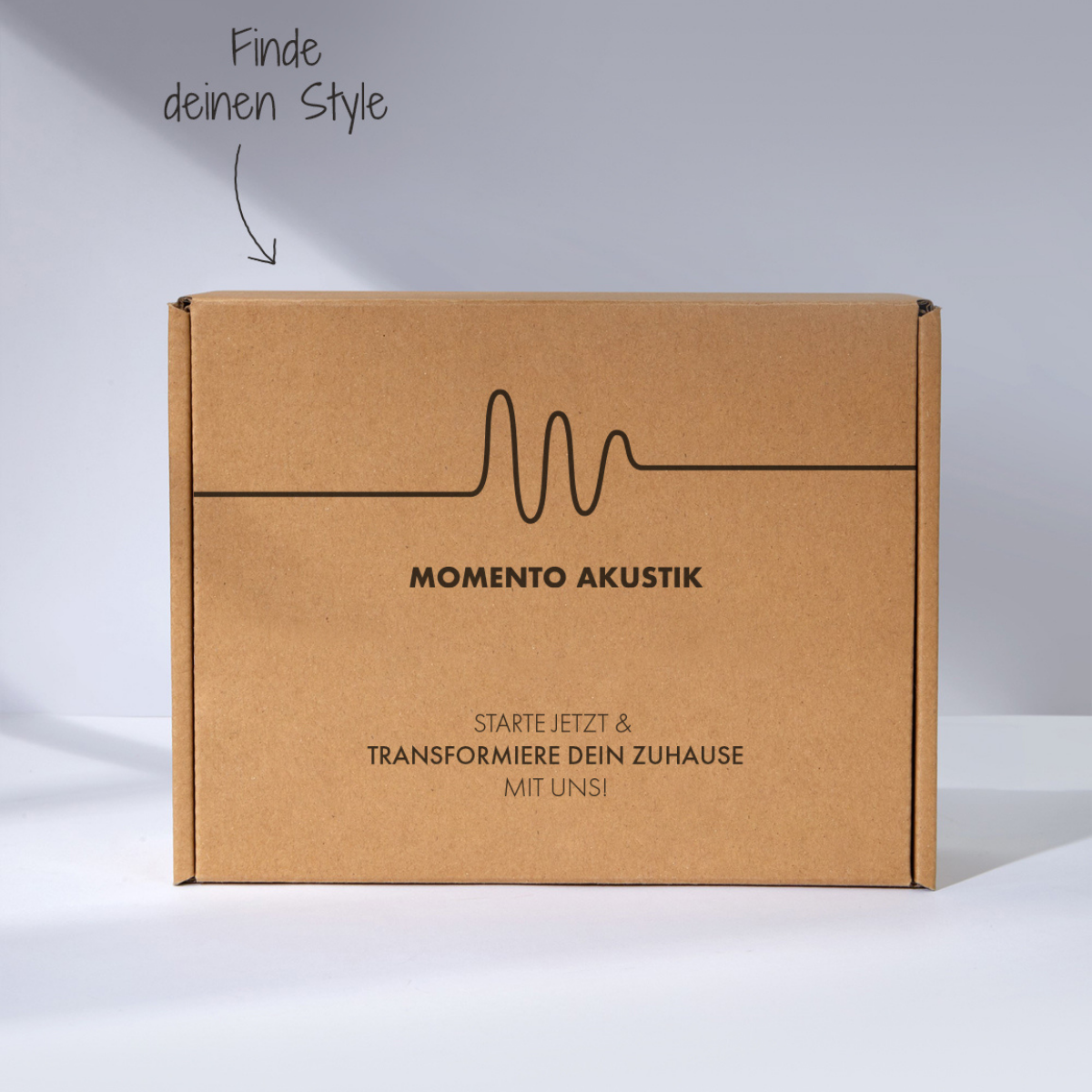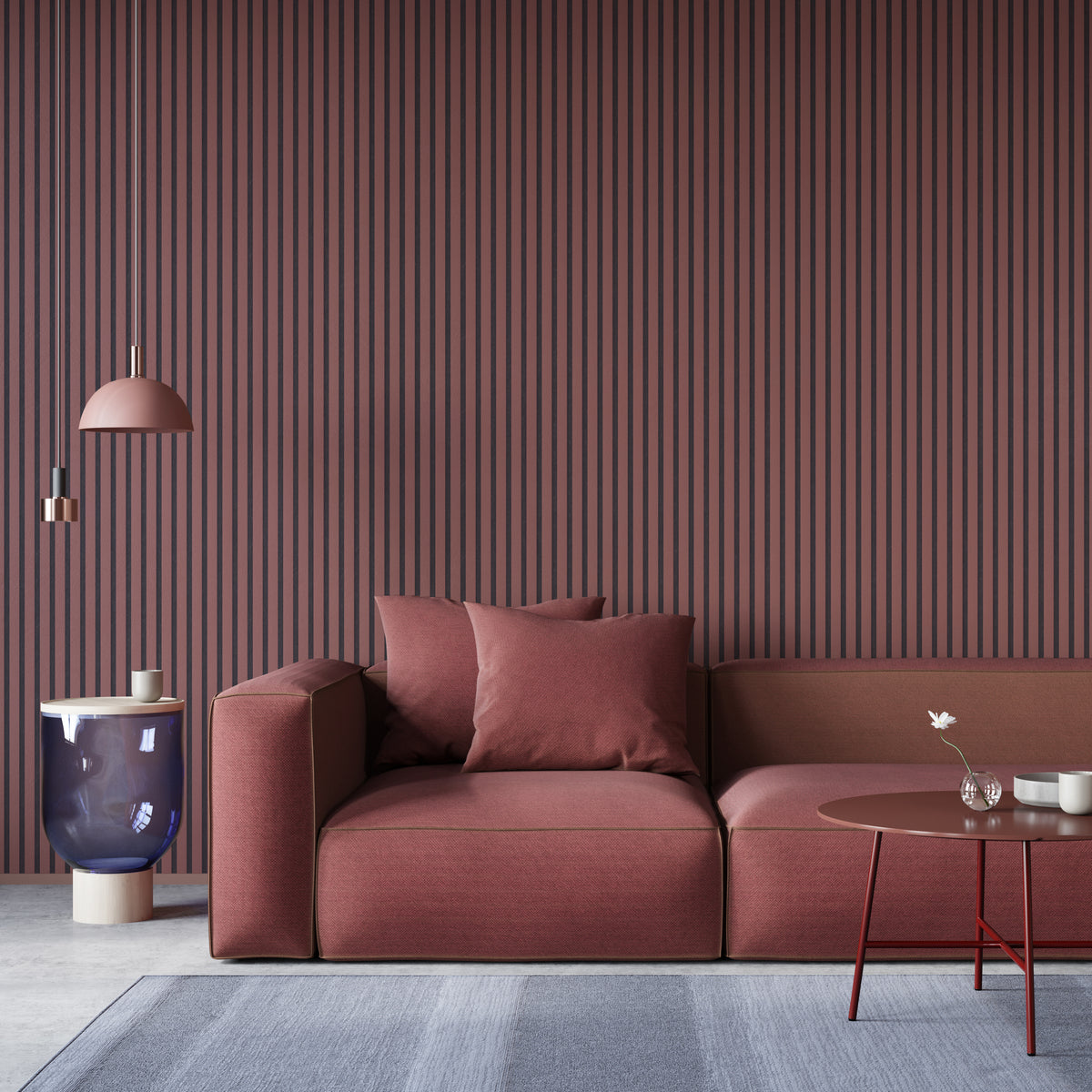If the acoustics in a room aren't right, it's difficult to feel comfortable – do you know that feeling? Conversations echo, music sounds muffled, and even quiet noises seem unpleasantly loud. Whether it's an open-plan living area where voices and kitchen noises mingle, or a home office where every click of a keyboard is annoyingly intense – these situations are part of everyday life for many people. But improvement is in sight, because that's exactly where acoustic panels come into play. These innovative helpers transform your echoing room into an acoustic paradise. But what's behind them? In this article, we explain how acoustic panels work and why they're a real asset to your home, not just acoustically but also visually. And best of all: They fit into any room, from the living room to the bedroom, and create the desired effect everywhere. Join us now to explore the world of room acoustics and discover how acoustic panels work to make your everyday life quieter and more harmonious.
What are acoustic panels?
Acoustic panels are more than just a decorative element. They are the answer to many everyday acoustic challenges. Imagine you're sitting in your living room with some friends. You're having a lively conversation, but every conversation echoes so loudly that it's difficult to listen. Or you're working from home, and every sound—from the ringing of a telephone to the clattering of a keyboard—seems to spread unpleasantly throughout the room. These situations demonstrate the importance of good room acoustics. Therefore, we would like to clarify: How do acoustic panels work? They are specially developed elements that improve sound absorption in a room. They are often made of sound-absorbing materials such as felt or wood and are designed to reduce disruptive reverberation effects. This makes the sound in the room more pleasant, conversations clearer, and noises less disruptive. That sounds wonderful, doesn't it? So let's delve a little deeper into the topic: There are many types of acoustic panels that differ depending on their application. Wooden acoustic panels are particularly popular, as they are not only functional but also aesthetically pleasing. With their natural look, they blend seamlessly into both modern and classic interior styles. Other options use felt or textiles to create a soft, homely feel. This variety of designs and materials makes it easy to choose acoustic panels to suit any room. But how exactly do acoustic panels work? We'll explain this in detail in the next section.
Acoustic panels: Function explained clearly
How do acoustic panels work and what makes them so effective? To understand this, we will take a look at the basic physical principles related to room acoustics. Sound waves spread through a room by being reflected off walls, ceilings, and other solid surfaces. These reflections create reverberations and can make the room sound chaotic and unpleasant. This is precisely where acoustic panels come into play. But how do acoustic panels work in detail? The properties of acoustic panels are based on sound-absorbing materials . These are specifically designed to "swallow" sound waves. When sound hits the surface of a panel, a large portion of the sound energy is trapped deep within the materials instead of being reflected back into the room. The effect of acoustic panels is therefore to significantly reduce reverberation and thus make the sound in the room clearer and more pleasant. But how do acoustic panels work so that they always achieve optimal results in different rooms? The effectiveness of acoustic panels depends on various factors, such as the size, material, and placement of the panels. Large acoustic panels cover larger areas and are particularly suitable for rooms with severe reverberation problems. Acoustic panels made of felt or wood not only offer excellent acoustic properties but also blend harmoniously into the room design. And they can always be installed precisely to specifically address problem areas in the room.
What are the benefits of acoustic panels?
If you're wondering what acoustic panels are good for and what they're actually used for, it's worth looking at two crucial aspects: acoustics and appearance. Both play an essential role in improving rooms both functionally and aesthetically. The main purpose of acoustic panels is to optimize room acoustics . Everyone knows the unpleasant effect of an echoing room – be it an open-plan living area where conversations echo, or an office where every noise disrupts concentration. How do acoustic panels work in these situations? They are made of materials that absorb sound waves and prevent them from being reflected back into the room. This makes the sound clearer, conversations more pleasant, and even music sounds more intense. Acoustic panels are particularly beneficial in rooms with many hard surfaces such as glass or tiles. They create a harmonious soundscape that significantly increases well-being. For example, if you're sitting in your living room listening to your favorite music, the sound can seem harsh and rattling without acoustic panels. With the right acoustic panels, however, it becomes full and clear – the room feels much more pleasant.
But how do acoustic panels function as a design element beyond their acoustic effect? They are also a stylish design element that adds character to your rooms. What are acoustic panels for? Quite simply: They combine functionality with aesthetics , becoming an eye-catcher on your walls or ceilings. The wide variety of designs, colors, and materials of our acoustic panels allows you to perfectly match them to your interior design style. Whether you prefer the warmth of wood, as with oak acoustic panels, or modern felt variants – the possibilities are almost endless. The advantages of acoustic panels lie not only in their effect, but also in their visual adaptability. An everyday example: You want to visually enhance your dining area and simultaneously improve the acoustics to make conversations more pleasant. With stylishly designed acoustic panels, you can achieve just that. They ensure that voices and noises do not overlap and simultaneously give the room a unique touch. In summary: How do acoustic panels work in their combination of sound absorption and design? They're the perfect solution for combining both aspects. They not only improve sound quality but also add visual accents that give your home a personalized and harmonious atmosphere.
How do you attach acoustic panels?
Optimal installation of acoustic panels is a crucial step for them to achieve their full effect in terms of sound absorption and room acoustics. There are three proven methods for attaching them to the wall or ceiling. Each of these options offers specific advantages and can be implemented depending on your requirements and technical skills:
- How do acoustic panels work when installed with adhesive? A quick and easy way is to attach them with a strong mounting adhesive. This method is particularly suitable if the panels are to be attached directly and permanently to a smooth wall surface. After applying the adhesive, the panels are carefully pressed into the desired location and held in place for a short time until the adhesive takes hold. With this type of installation, the acoustic panels generally achieve sound absorption class C. This means that they already achieve a noticeable reduction in reverberation. Please note: This type of installation is only suitable for wall mounting, not for ceiling mounting.
- How do screw-in acoustic panels work? To securely install acoustic panels while achieving good sound absorption, they can be screwed directly to the wall or ceiling. Specially adapted screws are used, suited to the respective substrate. They are attached so that they press against the felt and remain virtually invisible. This method is particularly durable and ideal for those who want a permanent installation. With direct screwing, the acoustic panels also achieve sound absorption class C, which ensures a noticeable improvement in acoustics.
- How do acoustic panels with substructure and insulation work? The most effective method for improving room acoustics is to mount the acoustic panels on a custom-made substructure. This involves installing 45-millimeter-thick joists approximately 60 centimeters apart on the wall or 30 centimeters apart on the ceiling. Thick insulation is inserted between the joists to increase their sound-absorbing effect. The acoustic panels are then firmly screwed to the joists. This construction can be mounted on both walls and ceilings. It ensures Class A sound absorption, thus ensuring maximum reverberation reduction and optimal sound quality.
Acoustic panels: all the advantages at a glance
With acoustic panels, you've found the perfect solution to enhance your rooms not only acoustically but also visually. Their versatility makes them a valuable element for any room. But how do acoustic panels work in the different areas of your home? Here are the key benefits summarized: In the living room, acoustic panels ensure clear and pleasant sound quality, which improves both conversations and the listening experience of music or films. Acoustic panels in the bedroom create a calming atmosphere by dampening disruptive outside noises and acoustically optimizing the room. For example, street noise is reduced, allowing you to finally concentrate fully on your sleep. Our tip: Use the product finder to select the perfect panel for your needs and living style.
Acoustic panels are also helpful in the home office . By minimizing reverberation and distracting noises, such as the hum of the printer or conversations from other rooms, you can concentrate optimally. And what are the benefits of acoustic panels in the hallway? There, they dampen the often annoying noises caused by doors or footsteps. The big advantage: Thanks to the panels, the often neglected entrance area not only becomes more acoustically pleasant but also gains visual appeal. In the children's room, acoustic panels can help reduce noise and create a quieter environment. While the children play and make noise to their heart's content, the resulting noise is muffled, so that the romping is not perceived as unpleasant even after a long time. As you can see, the advantages of acoustic panels are as diverse as the rooms in which they are used. From improved room acoustics to stylish designs, they offer a solution for every room, making your everyday life more pleasant and harmonious.
Acoustic panels – which ones are best suited to your room?
Unfortunately, we can't answer this question remotely. But we can offer you a practical decision-making aid: Simply order a sample box of acoustic panels . We'll send you samples of our options, and you can decide at home which ones best fit your space.





